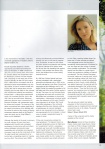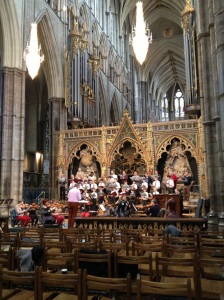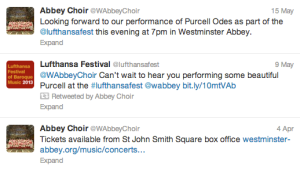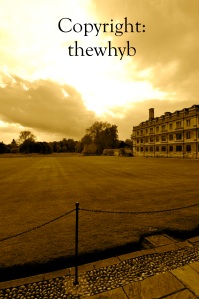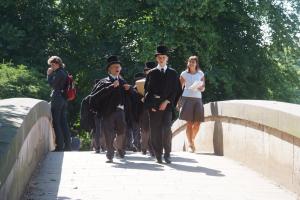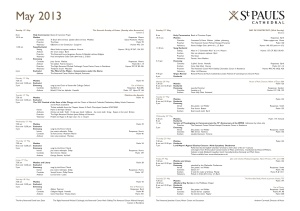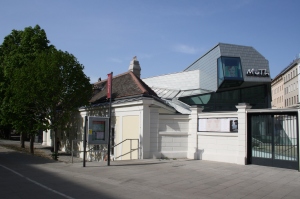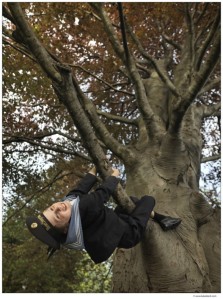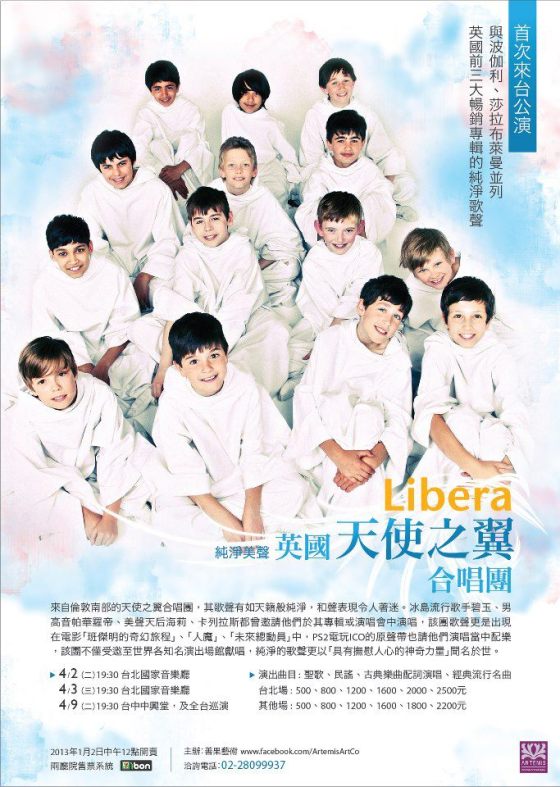Disclaimer: The views represented are purely personal observations. The author recognises that a view cannot be formed based on a single performance, and hence, all compliments and criticisms are not fair representations of the choirs concerned.
Westminster Abbey Choir – 15 May 2013
(Lufthansa Festival of Baroque Music 2013 in association with Rolls-Royce plc)
This concert was a collaboration between The Choir of Westminster Abbey, St James’s Baroque, and individuals Mary Bevan, Iestyn Davies, Charles Daniels, Andrew Tortise, Jonathan Sells and Benjamin Bevan, under the direction of conductor James O’Donnell.
The Abbey is every bit impressive from the exterior. Its façade puts modern day architects to shame, and the history and mystery hidden behind those walls gives the Abbey an enchanting vibe. I was especially looking forward to the acoustics of the cathedral, particularly in a concert setting. I previously attended evensongs in cathedrals in Dublin, but the subdued atmosphere during evensongs did not always fully “show off” the acoustics of the cathedral. Of course, evensongs aren’t for that purpose. The pomp of a concert allows otherwise.
However, I was rather disappointed that a huge part of the Abbey was cordoned off, and only a part of it was to be used for the concert (is this a norm?). (File photo attached below.) For this reason, I was also denied the entry to the washroom since it was in the cordoned section, even though it was more than 10 minutes before the start of the concert. The cordoning off made the Abbey seem so much smaller and less majestic than it actually was. But nonetheless, the St James’s Baroque instrumentalists were already in their places and tuning their instruments. My first cathedral concert was about to start! The men and boys in bright red then came through from the middle of the stage.
The highlight and standouts of this concert would have been the individual singers, offering seasoned renditions of the pieces. The Choir of Westminster Abbey took a more supporting role, with the exception of David Martin (alto), William Balkwill (tenor), Jonathan Brown (bass), and Robert Macdonald (bass) who opened with “My beloved spake”. Even though the choir sang for only about 20-30% of the time and the concert lasted past 9pm, the choristers never really looked bored or tired, but remained engaged for the most part. They came out very strongly at the end, and the cohesiveness and strengths of their voices was commendable. The part that was lacking was that ethereal sound, which perhaps could not thrive in a more limited space. The dim lighting in the cathedral offered a cosy, albeit sleep-inducing, set up.
The Choir of Westminster Abbey is a decent choir. After all, a choir that sings for the Queen cannot be all that bad. Furthermore, all the training in a boarding school (WACS) must have helped the choir develop well. It was also interesting to note that the choir is rather international (several Korean and Chinese names among the choristers in the programme) while remaining a quintessentially British icon. Still, I felt that there was a lot of potential left uncovered. I attribute this to the lack of “air time” for the choir, and to a scaled-down Abbey whose acoustics did not offer the audio nirvana I was highly anticipating. But of course, this choir deserves another listen, as one concert is not a fair representation of their abilities.
King’s College Cambridge Choir – 16 May 2013
Cambridge is an absolutely charming city, and away from the hustle and bustle of London. Coming from an (over)crowded city of almost 7,500 people (and counting!) per square kilometre back home, I liked the peace and tranquillity of a city of just around 1,070 people per square kilometre. Bicycles and vehicles have a cordial relationship, and the streets exude an old world charm. At the same time, the city has a lively and youthful vibe. And yes, I should have studied harder if I had known Cambridge University was located in such an attractive city.
As a fan of John Rutter, I was rather intrigued by his attachment to this city. John Rutter formed a mixed voice chamber group called “The Cambridge Singers”, and King’s College Cambridge Choir has sung John Rutter’s compositions, some of which are available on YouTube. And having heard King’s College Cambride Choir’s singing on YouTube, I decided to pay the Chapel a visit.
When I first saw the service schedule, I was disappointed. It said “Sung Eucharist”. I was looking forward to a choral evensong, and I had no idea what “Sung Eucharist” was (no singing?). Thanks to the very knowledgeable folks on Libera Dreams, I found out that it wasn’t going to be as bad as I thought. There was going to be singing after all, and several of the songs were actually quite well-known. A tweet by the choir below:
The gates opened at 5.15pm for the 5.30pm service. At 5pm, I waited at the gates of the Chapel. And waited…and waited…and waited…and then I realised. I was at the wrong gate – the back gate! I consulted Google Maps, and immediately ran to the front of the Chapel, where a long queue had already formed. By then, it had already started to drizzle, and a line of umbrellas formed. While waiting, I admired the beautiful, sprawling school grounds. Most of the grounds were off limits (particularly the grass), so if someone wanted to get from one building to the next, he or she would have to walk a huge round around the square. A little trivia for those thinking of lying on the green pastures to read a book…
Once or twice, a boy from the choir would be spotted walking out of the Chapel and into the next building, presumably to retrieve something, and heads would turn. When everything was settled, the Chapel gates finally opened. We were led through the Chapel, which had two sections – one in front, and one behind (restricted view). Most went into the front section. As I was a little behind in the queue, I got a seat that was rather far off from where the choir would be seating. It was a good crowd, but the silence of the Chapel was well maintained. The choristers soon made their way into the Chapel, dressed in their iconic red and white vestments. It so happened that the men were having a break that day, resulting in an all boys choir.
The service was conducted very seriously – everyone was given a service booklet, invited to join the communion, and asked to stand each time the boys sang. I have attached the service schedule in this post, so you can see the pieces sung. I cannot describe each piece individually, as I was not in a setting where I could take notes of pieces, but I have to say – I think the King’s College Cambridge Choir is the best traditional choir I have heard in England, and in Europe for that matter. Their voices were in perfect harmony, and filled almost every inch (figuratively) of the Chapel, even if it was just a handful of boys in the quire. The song selection was excellent, and the coordination between the organist and the choir was flawless. The organist was a virtuoso in his own right. The responses sang between the song leader on the right and the boys on the left reverberated throughout the cathedral, better than any high-end 2-channel audio system could. This was the ethereal sound I was seeking!
Near the end of the service, the boys came forward to receive communion, and it struck me how small they were. Were they really the ones whose voices could fill the Chapel and have such an impactful presence?
During communion, about 30% of the attendees went forward to participate. The 70% were perhaps, like me, present to listen to the choir.
After the service, I walked out of the Chapel and stood around to appreciate the beauty of the Chapel grounds for one final time. Unexpectedly, the boys appeared out of the Chapel gates to return to school, dressed formally in black “cloaks” and top hats. I unintentionally overheard a conversation between a boy and his family member.
“Oh you were amazing!” the lady excitedly complimented.
“Thank you.” the boy replied shyly.
“And you’re grown since the last time!” the lady continued.
It reminded me of the sacrifices these choristers make – being away from their families and training hard – to perfect the art of choral music. I believe their sacrifices have paid off, having touched the lives of many, including mine.
I have since purchased one of the best seats in the concert hall when King’s College Cambridge Choir comes to my country later this year.
St Paul’s Cathedral Choir – 18 May 2013
While watching Margaret Thatcher’s memorial service, I decided that I had to visit the St Paul’s Cathedral. I missed it the last time I was in London, and I didn’t want to miss it again. The St Paul’s Cathedral is indeed a sight to behold the moment you step into it. It’s grand and imposing – larger than the Westminster Abbey, they say.
I planned to sit in the quire, as suggested by a member of the Libera Dreams forum, but failed to obtain a seat. The next best option – under the dome – was also fully occupied by the time I was in the Cathedral. I got a seat just behind the area under the dome. The popularity of the “best seats in the house” is evident, because it must be noted that I was on time. My seat selection turned out to be a negating factor to my experience. Here’s why:
The choir is a good choir. I thoroughly enjoyed the pieces they sang, and I think that they were excellent in projecting their voices within such a large space. I appreciated the change from the all boys choir I heard at King’s to a men’s and boys’ choir at St Paul’s, which added depth to the pieces. (Of course, the light and airy sound of boys’ voices is not a bad thing at all.) However, because of the sheer size of the Cathedral, the sounds became dispersed. By the time the sounds reached my ears, they were no longer distinct. When sounds are dispersed, the songs lose their melody, and become an echo of many different notes at a time. As such, I could not hear the same harmony that I heard at King’s. But, I must stress that this is by no means the fault of the choir.
A second observation is that most visitors to the Cathedral were present “just to have a look” for a while, and because of this, there was an ongoing game of musical chairs while the service was in progress. This was, at times, distracting for those who intended to sit through the whole service.
St Paul’s Cathedral is a worthy stopover during a trip to London. But a word of advice: grab the seats under the dome, or if possible, in the quire, which potentially offers the closest experience you could ever have.
Wiener Sangerknaben (Vienna Boys’ Choir) @ MuTh, Vienna – 24 May 2013
Friday Afternoon Concerts
I was exposed to the Vienna Boys’ Choir (WSK) as a kid, and I’ve watched their performances for more times than I have for any other professional choir, mainly because they visit my country more frequently. I had caught two of the four touring choirs over three years. The first performance was partially a musical – “Silkroad” to be precise. I enjoyed it, but it just didn’t live up to my expectations of what the most famous choir in the world should be. I caught the choir a second time because twins Nigel Howe and Dennis Howe were performing. They were the first and only members from my country, and national pride became a factor in my decision to attend the concert. The third year, Libera came and I skipped WSK’s concert, when Brucknerchor performed. The choir also emphasises purity of voice over amplification (no microphones), but the lack of amplification means that a nine year-old boy has to project his voice in a hall of 2,000 people. This, however, is not always successfully carried out – understandably so.
I subsequently heard that Brucknerchor performed very well, and that they were perhaps the best choir out of the four touring choirs for the moment. When I found out that I would be visiting Vienna, and that Brucknerchor would be performing during the dates that I would be there, I decided to listen to a concert on their homeland. In football, clubs usually play better when they play “at home”, so I surmised that WSK would perform better in their very own concert hall – the newly opened MuTh.
The Friday Afternoon concerts are the choir’s most public appearances, coupled with chapel duties on Sundays. Ad-hoc performances are arranged separately. The online reviews of chapel service with the Vienna Boys’ Choir were pretty negative, so I chose to give it a miss. The good thing about Friday Afternoon concerts is that the choir sings with an orchestra. Concert tours are usually done a cappella or with a piano.
The MuTh is a very nicely constructed concert hall. Its acoustics are design to suit the boys’ voices, and even the piano is custom made. The acoustics are good, and I would recommend even a seat in the back row because it gives you an eye level view of the stage. Unless, of course, you enjoy observing the visual expressions. The MuTh is located a walking distance away from Augarten Palace, the home of the boys, making it much less of a logistical hassle to ferry the boys around in buses.
The first half of the concert did not involve the orchestra. The performance was similar to the ones I had previously attended back home. The starting song “O Fortuna” is also a regular feature on their touring programme. The second half livened up considerably with the introduction of the orchestra, as the boys began to open up. The programme included, among other pieces, Schubert’s 23rd Psalm, Ave Maria by Cherubini, Heinz Kratochwill’s “Jubilate Deo”, “As It Is In Heaven” by Stefan Nilsson, Yell by Yoshiki Mizuno, a medley from the movie Sister Act, and Paul Simon’s “Sounds of Silence”.
The standout of the concert was a boy named Philipp, who soloed a complicated piece on his own. He was probably the smallest member of the choir that afternoon, but never judge a book by its cover! Check out a CD recording he has made:
The choir is technically good, although a lot of criticism has been levelled at them in recent years. People have even asked them why they aren’t as good as before, and these are the questions that management has had to answer. In my opinion, they may have been victims of their own historical success – resulting in expectations they are unable to meet. Management has done a good job changing the image of the choir into a modern and fun institution with a lot of fan interaction and photo releases. Although it may not be the best choir in the world now, it certainly remains one of the most recognisable choirs – with the sailor suits and all.



